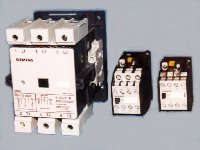सब घट मेरा साईयां, खाली घट ना कोय !
बलिहारी उस घट की, जा घट परगट होय !
(God is present in every human beings but blessed is the human being
where it reveals itself )
(I) The moment a girl completes 18 years, she can –
(a) sell tobacco made products (सिगरेट की दुकानों पर
लिखा होता है कि 18 वर्ष से कम तम्बाकू बेचना अपराध है )
(b) marry of her own choice
(c) drink
(d) drive
(e) vote
(II) The moment a person becomes enlightened
(I mean he sees his palpable God or the Light of the formless God,
which Lord Buddha and others have seen), his all kinds of FEAR
disappears such as –
(a) fear of death – his own or death of near and dear one (डूबने का डर अगर,
मुझको हो तो कैसे हो ? मैं तेरा, कश्ती तेरी, साहिल तेरा और दरिया भी तेरा )
(when a flower dies, we do not cry. We know it is impermanent)
चाहे निकल जाये हमारी body से प्राण रे
(b) fear of insult/criticism by others (लोग क्या कहेंगे )
(c) fear of losing physical/materialistic assets (रोटी, कपड़ा और मकान आदि )
(d) fear of security/career of children/brothers/sisters etc.
फानूस बन कर जिसकी हिफाजत खुदा करे !
वो शमा क्या बुझे जिसे रोशन खुदा करे !
(III) All the qualities mentioned in Part I, II and III of my blogs can also
be present in a highly spiritual Person moving toward enlightenment
(may be for some other reasons like being honest due to earning
reputation/fear of police arrest etc.) . But the quality ‘ABSENCE OF FEAR’
is the only quality which separates an Enlightened Person from a highly
spiritual person.
जैसे आपके घर के बाहर एक कूड़ा करकट का ढेर लगा हो कोई आन्धी आये और
सारा कूड़ा करकट ले जाये ! जैसे जीवन में कोई क्रांति आ जाये !
Similarly, fear disappears after enlightenment.
(IV) When the fear disappears,
(a) his life becomes more transparent. With fear, his personal desires/greed
also disappears. He has nothing to lose. He knows that if some thing is
shameful to reveal, it is more shameful to hide.
(b) he is not perturbed what is happening in life. He becomes a witness only.
When we see a movie, we know that these are not real things,
so we are not perturbed. Life becomes a movie for him
(c) Or say life becomes a dream for him. If, in a dream, my friend borrows
a 100 rupee note from me, after wake up, I will not ask him to return.
At the core of his heart, he is not bothered as to who is harming him financially,
emotionally, physically etc.. Though for day-to-day practical behavior
with the worldly people, he may behave like a worldly person.
But a noticeable difference can be felt in his behavior.
(d) he does not feel any special attraction for his family members.
He retains only compassion for them.
सीने पर रख हिज्र का पत्थर चुपचाप !
घर में रह और छोड़ दे घर चुपचाप !!
(हिज्र - separation)
(e) his universe becomes full of joys – both outer and inner. The common
quality in all the mystics was that they were full of love.
ताकत की जरूरत तब होती है जब किसी का बुरा करना होता है वर्ना सब
काम प्रेम से हो जाते हैं ! परमात्मा में डूबे हुये इंसान को संसार कैसे समझ सकता है
उसकी अलग दुनिया होती है !
सारे नशे उतर जाते जब होती प्रभात्
नाम खुमारी नानका चढ़ी रहे दिन रात्
Only human beings love. Animals do not love. भैंसों में Romeo Juliet, हीर- रांझा
तथा लैला मजनूं के कहानियां नही होती ! और आजकल तो human beings में भी
प्यार एक या दो साल से ज्यादा नही चलता ! ज्यादा आंसू नहीं बहाये जाते !
कुर्बानी की बात पर तो हंसी आती है ! हर कोइ किसी का Ex है ! Break-up या Dump
करना आम बात है !
केवल अपने मान सम्मान को विचारने वाला प्रेम नहीं कर सकता !
प्रेम का आधार तो त्याग और बलिदान होता है A E.P., full of selfless
divine love, might refuse to pluck a fruit from a tree and would
rather wait till it ripens and falls off.











